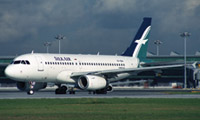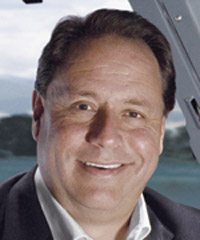Special Report: Training in the Asia-Pacific
Trainers cashing in on booming Asia-Pacific
New aircraft types, from the A380 and A350 to the B787 Dreamliner and the proposed new B777X, coupled with massive airline orders for fleet expansion, are continuing to bolster the flight simulation business. Orders for full-flight simulators and other training aids are rolling in, particularly in the Asia-Pacific region.
July 1st 2013
When Canadian flight training group, CAE, announced its full year results recently it confirmed an ongoing trend in the simulation market: the Asia-Pacific and its thriving airline industry has already become a key sales target for anyone in the business of selling flight simulators and other training aids. Read More »
 |
| SilkAir: signed a five-year training deal with Boeing |
Sixteen of the 30 full-flight simulators sold by CAE in its latest year, ended March 31, were to customers in the region.
That trend, said the company, has been going on for the last five years. The Asia-Pacific took 13 of 37 full-flight simulators sold in the 2008 financial year, 15 of 34 in 2009, 11 of 20 in 2010 and 16 of 29 in 2011.
“With continued high levels of aircraft deliveries, we expect strong demand for civil full-flight simulators again in fiscal 2014,” said Marc Parent, the company’s president and chief executive.
Close to 200,000 new pilots will be required by the region’s airlines in the next 20 years, more than 70,000 of them in China, according to Boeing. It is hardly a surprise, therefore, that carriers and training providers are expanding their training facilities and ordering more simulators to meet the demand.
Analysts predict the value of the global market for commercial and military simulators will reach close to $10 billion annually by 2018. Of that figure, some $4 billion will be for civil aviation and more than half of the business in the Asia-Pacific.
Providers of training equipment - the key suppliers are CAE, Mechtronix, Rockwell Collins and the Thales Group - are moving quickly to prepare for the demand. The aircraft manufacturers too are accelerating their involvement.
As recently as April, Boeing announced it was “greatly enhancing” its flight training support for customer airlines in the Asia-Pacific, Europe and the Americas by adding and repositioning a number of flight training devices within its global network.
 |
| 'Beginning with our first simulator sale to China more than 20 years ago, there are now more than 80 CAE-built simulators operational in the country' |
| Jeff Roberts Recently retired Group President, Civil Simulation Products, Training & Services CAE |
The announcement, at the World Aviation Training Symposium (WATS), included new capabilities for training on Next-Generation B737, B777 and B787s.
Boeing Flight Services will install two new full-flight simulators - a B777 and Next-Generation B737- at its Singapore training campus. They are expected to be ready for training in early to mid-2014 to support growing pilot training needs and increasing airplane deliveries in the region.
Singapore-based SilkAir recently signed a five-year training agreement with Boeing to support the airline’s transition to an all-Boeing fleet of B737s. The added B737 training capability will help meet demand as customers in Indonesia, Japan, Korea and China take delivery of new airplanes.
Airlines in China and Indonesia will also benefit from the increased B777 training capacity. “Continued development of a robust global training network is vital, not just for Boeing, but for the industry,” said Bob Bellitto, global sales director, Boeing Flight Services.
“The urgent need for competent aviation personnel is a global issue, but it’s hitting the Asia-Pacific region particularly hard. These new and strategically redeployed flight training devices are part of Boeing’s ongoing commitment to meet the growing needs of the industry and our customers around the world.”
Airbus, which has training centres in Toulouse, Miami, Hamburg, Bangalore and Beijing, has also been upgrading and expanding its facilities. The first A320 full-flight simulator upgradable to support its new A320neo flight training is operational at the Hua Ou Aviation Training Centre in Beijing.
Last year, it signed an agreement with CAE to set up a second pilot and maintenance crew training centre in India. Located in Noida, near Delhi, the centre is expected to be fully operational this year with the capacity to train as many as 5,000 crew members annually. It will be one of the largest training facilities of its type in the region.
Last month, Rockwell Collins and Beijing Bluesky Aviation Technology, an AVIC subsidiary, signed a Memorandum of Agreement with a view to establishing a joint venture that will design, manufacture and market commercial aviation flight simulators, initially focusing on airlines and aircraft manufacturers in China. Future plans include addressing the global commercial simulation and training market segment.
Rockwell Collins and Bluesky have previously developed simulation and training solutions for China’s MA60, MA600, ARJ21 and C919 programmes.
The companies will expand their work to include a broader range of full-flight simulators and lower level training devices for regional, narrowbody and widebody airline training segments. The joint venture will also provide maintenance and support services.
Pending a final agreement and subsequent regulatory approvals, the business is expected to begin operation by year end.
Late last year, CAE, which has 16 training centres in the Asia-Pacific region, sold the first two Level D full-flight simulators (FFS), associated training devices and the CAE Augmented Engineering Environment (AEE) in China for the new C919 aircraft being developed by COMAC (Commercial Aircraft Corporation of China).
“We have a long history of cooperation with COMAC’s Shanghai Aircraft Customer Services Co. (SACSC), starting with the development of the first ARJ21 full-flight simulators,” said Jeff Roberts, the recently retired CAE group president, civil simulation products, training and services.
The two C919 CAE 7000 Series FFSs will incorporate the new third generation CAE TroposTM-6000 visual system. They will be ready for use at SACSC in 2015, prior to the aircraft’s expected entry into service.
In addition, CAE will provide two Level 5 Flight and Maintenance Training Devices (FMTDs). The CAE AEE provides a modeling and simulation environment that will allow SACSC and CAE to efficiently develop, evaluate, test, and validate a range of aircraft models and systems during the development phase of the simulators and aircraft programme.
Also in June, CAE opened a second full-flight simulator spares depot in China, located at the Pudong Airport Free Trade Zone (FTZ) in Shanghai. Its first depot in China opened in 2009 in Zhuhai.
“Beginning with our first simulator sale to China more than 20 years ago, there are now more than 80 CAE-built simulators operational in the country,” said Roberts.
Cadet pilots from several major Australian airlines will soon start training on a variety of systems designed, delivered and installed by Mechtronix, another Canadian-based flight simulator business. This follows the signing of two in-plant acceptance (IPA) certificates with training solutions provider, Flight Training Adelaide (FTA).
FTA has accepted both the Ascent® XJ Trainer™ and the A320 FFT X™-MPL which are to be installed in a new facility at Parafield Airport, South Australia. They will be part of a training programme devised by the company for airlines such as QantasLink, Virgin Australia and Cathay Pacific. The simulators will service a combined annual requirement of about 13,000 simulator hours.
The simulator and training frenzy isn’t confined to big jets. In December, ATR expanded its presence in the region by opening a new flight simulator centre in Singapore, the only one dedicated to the ATR-600 variants, the manufacturer’s latest turboprop model, and the only one in the Asia-Pacific.
Its other simulators are at ATR’s headquarters in Toulouse, Paris and Johannesburg, South Africa. At the opening ceremony were Lion Air president, Rusdi Kirana, Malaysia’s Firefly chief executive, Ignatius Ong, and crew from Air New Zealand’s Mount Cook Airways, who have begun training at the centre.
Lion Air is ATR’s largest regional customer. Its subsidiary, Wings Air, is operating 18 of the 72-seater aircraft, with another 40 on order.
Indeed, the Asia-Pacific makes up half of ATR’s customer base and its share is growing, driving the company’s decision to base a training facility in Singapore.
Today, there are about 250 ATR turboprops flying in the region, up from 132 in 2005. This represents 25% of the global fleet.